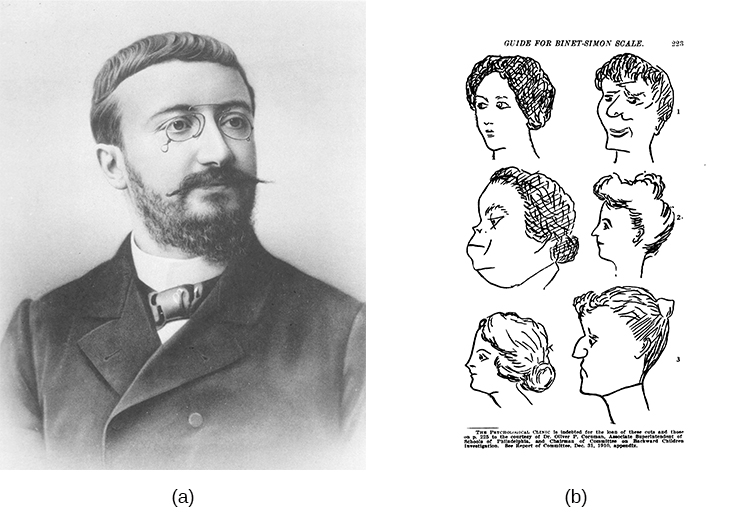| << Chapter < Page | Chapter >> Page > |

In 1939, David Wechsler, a psychologist who spent part of his career working with World War I veterans, developed a new IQ test in the United States. Wechsler combined several subtests from other intelligence tests used between 1880 and World War I. These subtests tapped into a variety of verbal and nonverbal skills, because Wechsler believed that intelligence encompassed “the global capacity of a person to act purposefully, to think rationally, and to deal effectively with his environment” (Wechsler, 1958, p. 7). He named the test the Wechsler-Bellevue Intelligence Scale (Wechsler, 1981). This combination of subtests became one of the most extensively used intelligence tests in the history of psychology. Although its name was later changed to the Wechsler Adult Intelligence Scale (WAIS) and has been revised several times, the aims of the test remain virtually unchanged since its inception (Boake, 2002). Today, there are three intelligence tests credited to Wechsler, the Wechsler Adult Intelligence Scale-fourth edition (WAIS-IV), the Wechsler Intelligence Scale for Children (WISC-V), and the Wechsler Preschool and Primary Scale of Intelligence—IV (WPPSI-IV) (Wechsler, 2012). These tests are used widely in schools and communities throughout the United States, and they are periodically normed and standardized as a means of recalibration. Interestingly, the periodic recalibrations have led to an interesting observation known as the Flynn effect. Named after James Flynn, who was among the first to describe this trend, the Flynn effect refers to the observation that each generation has a significantly higher IQ than the last. Flynn himself argues, however, that increased IQ scores do not necessarily mean that younger generations are more intelligent per se (Flynn, Shaughnessy,&Fulgham, 2012). As a part of the recalibration process, the WISC-V was given to thousands of children across the country, and children taking the test today are compared with their same-age peers ( [link] ).
The WISC-V is composed of 14 subtests, which comprise five indices, which then render an IQ score. The five indices are Verbal Comprehension, Visual Spatial, Fluid Reasoning, Working Memory, and Processing Speed. When the test is complete, individuals receive a score for each of the five indices and a Full Scale IQ score. The method of scoring reflects the understanding that intelligence is comprised of multiple abilities in several cognitive realms and focuses on the mental processes that the child used to arrive at his or her answers to each test item.
Ultimately, we are still left with the question of how valid intelligence tests are. Certainly, the most modern versions of these tests tap into more than verbal competencies, yet the specific skills that should be assessed in IQ testing, the degree to which any test can truly measure an individual’s intelligence, and the use of the results of IQ tests are still issues of debate (Gresham&Witt, 1997; Flynn, Shaughnessy,&Fulgham, 2012; Richardson, 2002; Schlinger, 2003).

Notification Switch
Would you like to follow the 'Psychology' conversation and receive update notifications?